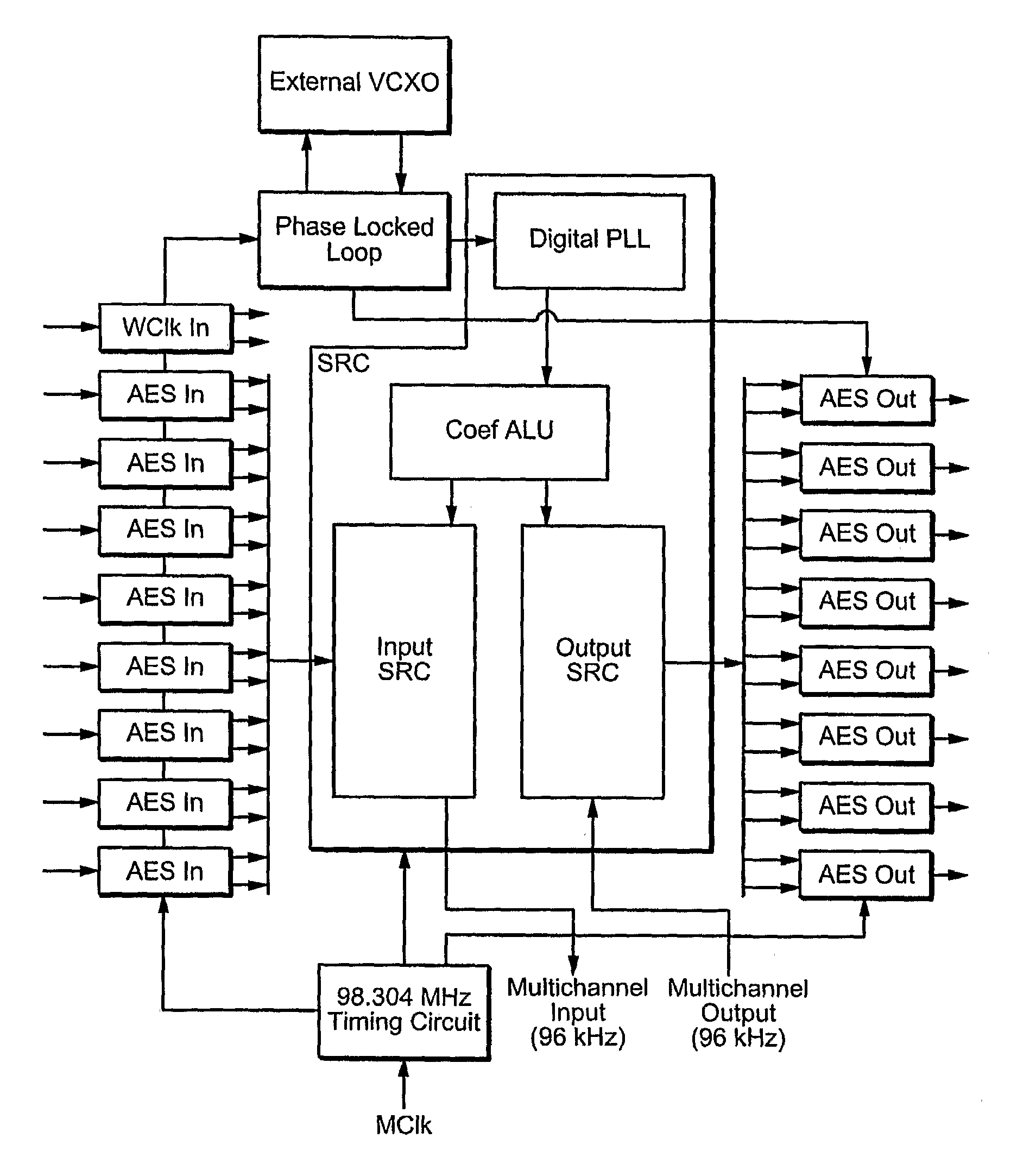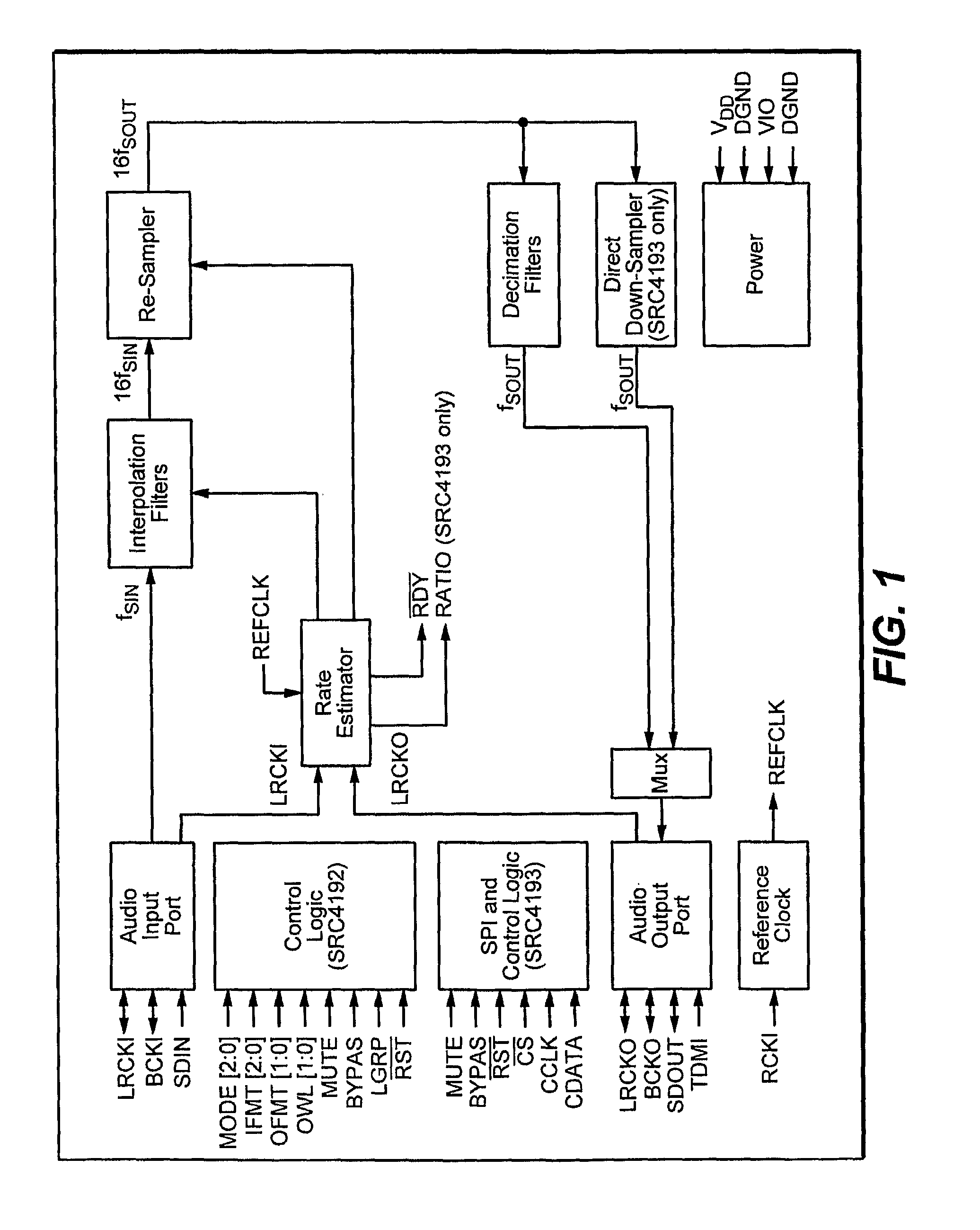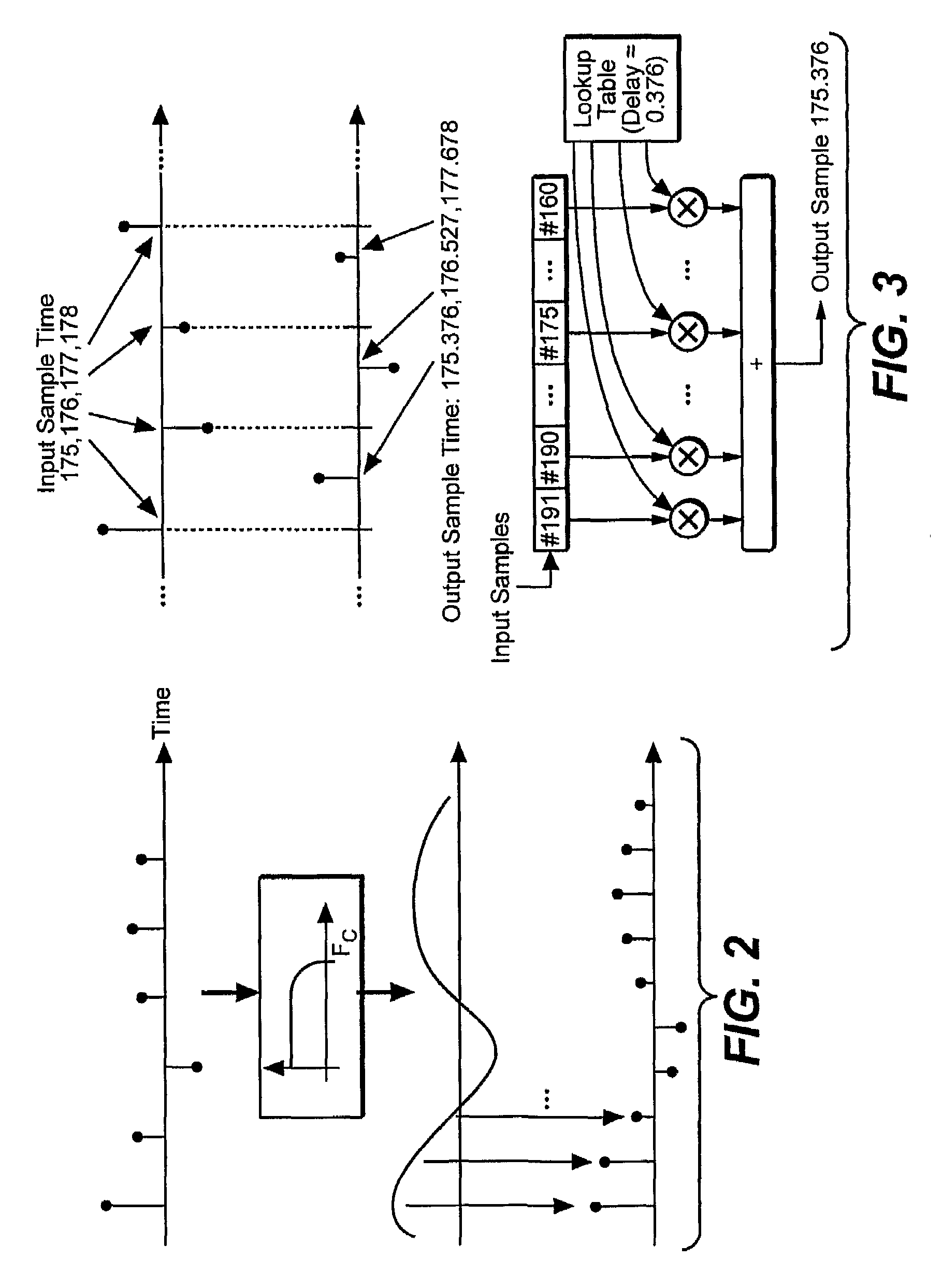Asynchronous sample rate conversion using a digital simulation of an analog filter
a digital simulation and sample rate technology, applied in the field of processing digital signals, can solve the problems of large amount of memory needed to store, difficult type of conversion, and inability to attract many applications, and achieve the effect of less memory
- Summary
- Abstract
- Description
- Claims
- Application Information
AI Technical Summary
Benefits of technology
Problems solved by technology
Method used
Image
Examples
Embodiment Construction
A. Introduction
[0025]FIG. 1 is a schematic block diagram of the SRC4193 chip mentioned above that performs sample-rate conversion according to a conventional sample-rate conversion technique. This technique, which is illustrated schematically in FIG. 2, uses finite impulse response (FIR) filters to interpolate and decimate digital signals by various ratios to obtain the desired destination sample rate. The sample-rate converter shown in FIG. 1 uses one low-pass filter to interpolate the source signal samples up to an intermediate rate that is sixteen times higher than the source sample rate. Another low-pass filter decimates the intermediate samples down to the destination sample rate. Under certain conditions, the decimation filter can be bypassed and the intermediate samples down-sampled directly to the desired destination sample rate.
[0026]Referring to the example shown in FIG. 3, a conventional sample-rate converter computes a destination signal sample for time t=175.376 by coll...
PUM
 Login to View More
Login to View More Abstract
Description
Claims
Application Information
 Login to View More
Login to View More - R&D
- Intellectual Property
- Life Sciences
- Materials
- Tech Scout
- Unparalleled Data Quality
- Higher Quality Content
- 60% Fewer Hallucinations
Browse by: Latest US Patents, China's latest patents, Technical Efficacy Thesaurus, Application Domain, Technology Topic, Popular Technical Reports.
© 2025 PatSnap. All rights reserved.Legal|Privacy policy|Modern Slavery Act Transparency Statement|Sitemap|About US| Contact US: help@patsnap.com



